From free music analytics to streaming and sales analytics, A&R and music discovery to market intelligence, and video analytics to radio analytics and beyond, here are the names you need to know.
RUTGER ANSLEY ROSENBORG, JASON JOVEN OF CHARTMETRIC
1 JUN 2020 • 17 MIN READ
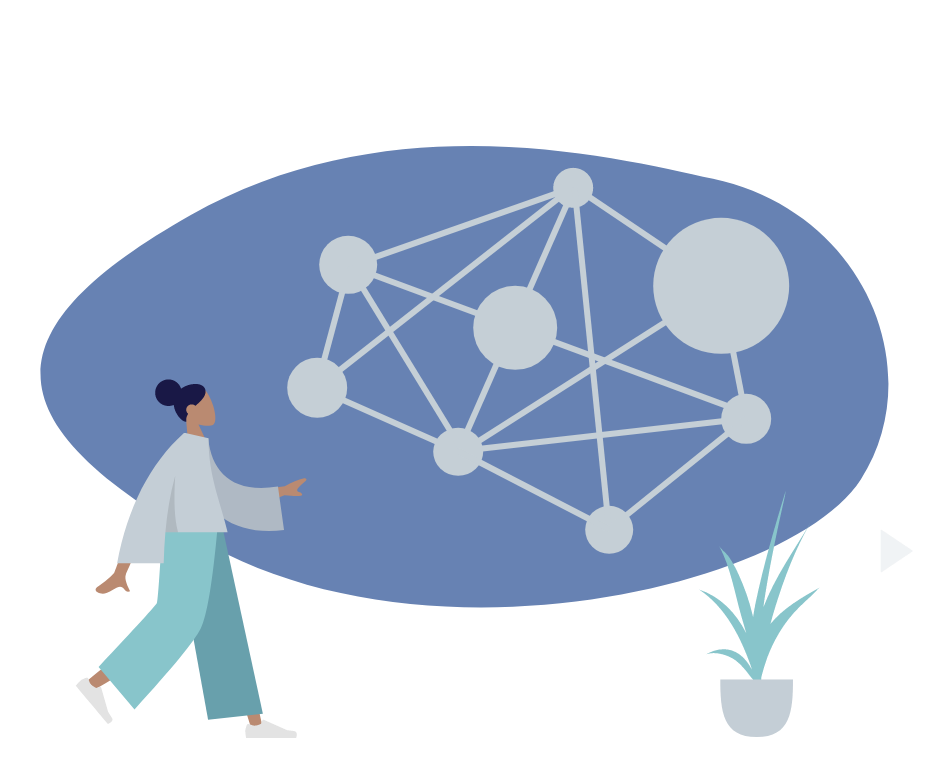
Today, both proprietary and also third-party music data analytics tools help industry professionals and artists alike understand their place in the music market. While we’ll continue to cover the proprietary analytics tools that each streaming platform offers to creators looking to track their own playlist adds, Spotify stats, video views, or audience engagement, it’s also important to understand the market-level insights that other music analytics tools can provide. If data and analytics are new to you, then you’ll definitely want to start with the Platform-Owned Tools listed below.
Platform-Owned Tools
- Spotify for Artists
- Apple Music for Artists
- YouTube Studio
- Amazon Music for Artists
- TikTok Analytics
- Pandora AMP
But if you’re looking for more advanced insights and a more diverse dataset, then there are a number of different tools to consider, depending on your music business focus.
Tools of the Trade
- Free Music Analytics: Next Big Sound, ForTunes, Kworb
- Streaming and Sales Analytics: Nielsen, Alpha Data, Revelator
- A&R and Music Discovery: Sodatone, Instrumental
- Market Intelligence: Soundcharts, Songstats, Spot On Track, Chartmetric
- Video Analytics, Radio Analytics, and Beyond: Pex, ACRCloud, WARM, Indify, The Echo Nest
Pulling in data from many different streaming, social media, and music-related platforms for millions of artists around the world, these tools make up a growing list of important options for understanding music data analytics, depending on the robustness of your music data needs, your particular industry sector, and, of course, your budget.
Free Music Analytics
Of these three free tools for music data analytics, a couple are ideal for indie artists looking to expand the insights they already get from their Spotify for Artists, Apple Music for Artists, and social media analytics dashboards, while the other provides summary charts-based insights.
Next Big Sound
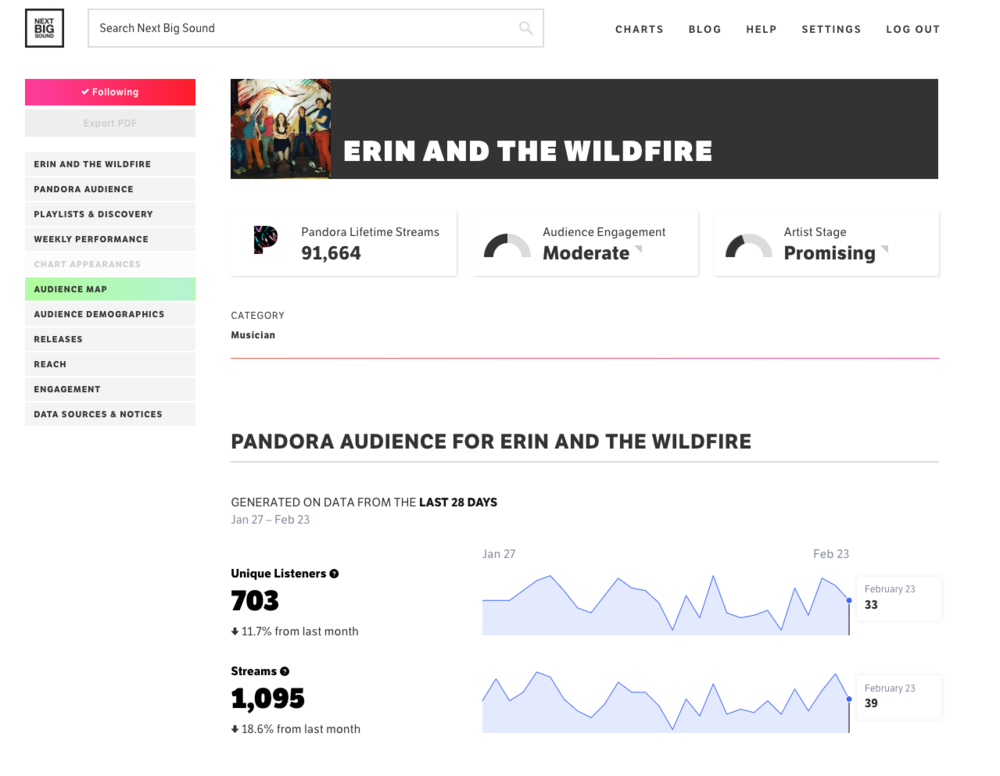
Before being acquired by Pandora in 2015, Next Big Sound was really a pioneer in public-facing music data analytics. Founded at Northwestern University by CTO Samir Rayani, CEO Alex White, Jason Sosnovsky, and CPO David Hoffman in 2008, Next Big Sound was soon selected for the Techstars incubator program in Boulder, Colorado. Two years later, Billboard named the company one of the 10 best music startups of the year. Today, Next Big Sound is still accessible to all, but its only music data source is Pandora itself, which doesn’t mean that the platform is any less insightful or informative for artists, fans, and everyone else interested in music data analytics.
- Data Sources: Pandora, Wikipedia, Facebook, Twitter, Songkick
- Key Features: Metric Glossary, Audience Engagement Indexing
- Market and Accessibility: Pandora and Social Media Tracking Tool for Anyone
- Use: If you need to understand your Pandora data, this is the place.
- Pricing: Free!
If Next Big Sound were an artist, they’d be Snoop Dogg: the OG in the game, but still around, being awesome.
ForTunes
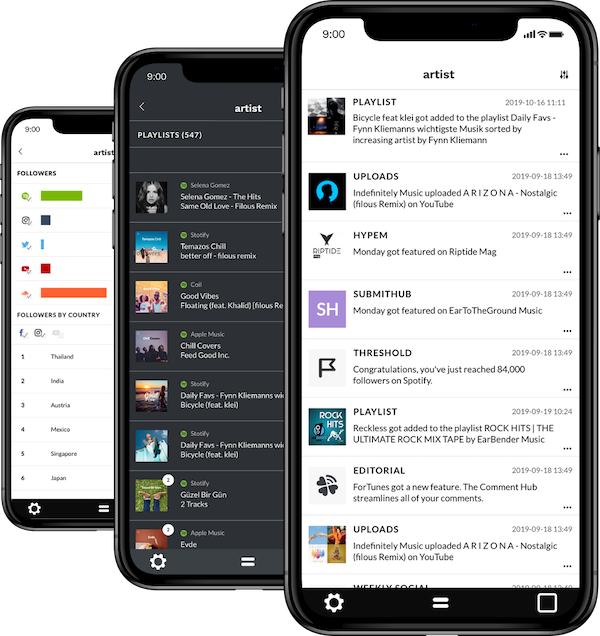
For indie artists, ForTunes is truly a hidden gem. Drawing on Spotify, YouTube, SoundCloud, Instagram, Facebook, and Twitter data, the Vienna-based seed-stage startup, like Songstats, has an easy-to-use mobile app for music data analytics on the go. The platform provides basic streaming and social media tracking in an intuitive format, and sometimes, that’s really all an artist needs to grow their career. We should note, however, that ForTunes will likely be offering a premium tier as early as June 2020, making it increasingly similar to the market intelligence tools we’ll cover later on.
- Data Sources: Spotify, YouTube, SoundCloud, Instagram, Facebook, Twitter
- Key Features: Mobile App
- Market and Accessibility: Basic Streaming and Social Media Tracking Tool for Anyone
- Use: If you’re a new indie artist or manager, start here.
- Pricing: Free … for now
If ForTunes were an artist, they’d be Lauv: a versatile champion of the do-it-yourself artist work ethic.
Kworb
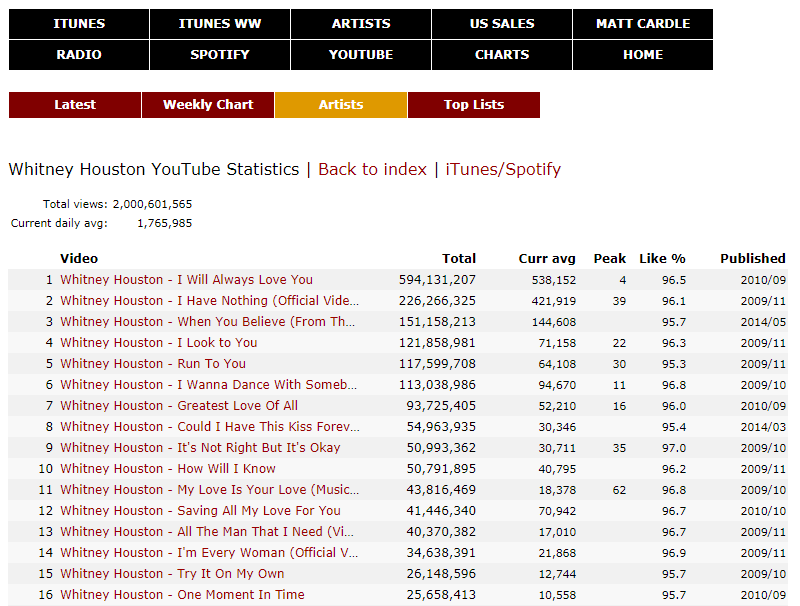
Kworb is somewhat less platform- or dashboard-oriented than many of the others we’ve covered here. The website provides charts-based summary insights with varying degrees of granularity. For a daily or weekly check-up on charts across the digital music landscape, Kworb offers a quick, holistic view that’s fruitful to add to any music industry professional’s routine.
- Data Sources: Spotify, Apple, Shazam, Deezer, YouTube, Radio, U.S. Sales
- Key Features: Global Charts, Global Digital Artist Ranking
- Market and Accessibility: Summary Chart Insights for Anyone
- Use: At-a-glance market knowledge for every music professional’s morning routine.
- Pricing: Free!
If Kworb were an artist, they’d be Lewis Capaldi: no frills, but delivering every time.
Streaming and Sales Analytics
Now, let’s look at music data analytics tools that are focused on tracking sales and streams at the enterprise level. These tools are largely limited just to a subset of entertainment professionals, either because of mergers, acquisitions, price point, or a “members only” business model.
Nielsen Music Connect
Nielsen’s music data analytics tools aren’t just the official source for the Billboard charts, they’re also owned by the same parent company, Valence Media. As an industry standard for measuring success at the album and track level, Nielsen Music Connect provides stream counts, radio spins, and 25+ years of sales data. Before April 2020, Nielsen, which has become MRC Data since the company’s late 2019 acquisition by Valence, also provided regional data for the United States. In late April, however, Spotify decided to withhold this data. Still, because it is such an institution, it’s very much an enterprise tool, meaning access and pricing is largely limited to well established entertainment organizations and major labels that have artists landing at the top of the Billboard charts.
- Data Sources: Streaming, Radio, and Retail Data Across Most Major Platforms
- Key Features: Sales Tracking, Stream Counts, Radio Spins, Official Data Source for Billboard Charts
- Market and Accessibility: Enterprise Tool for Top-Tier Entertainment Organizations
- Use: The historical standard for industry insiders.
- Pricing: Variable
If Nielsen were an artist, they’d be Taylor Swift: an enduring industry titan working with the biggest companies in the business.
Alpha Data (Formerly Known as BuzzAngle)
Until April 2020, Alpha Data was BuzzAngle, a New York-based music analytics startup founded in 2013, which was positioned as more of a stream tracker than a sales tracker. In 2018, Penske Media Corporation, the parent company of Rolling Stone, Variety, and Deadline, made a strategic investment in BuzzAngle, which then became the official data source for the Rolling Stone Charts and a direct competitor to Valence Media’s Nielsen and Billboard partnership. Alpha Data now claims to aggregate data from retailers, record stores, radio stations, and music venues, in addition to tracking 5 billion streams daily from more than 50 music platforms, and their access and pricing is geared toward a market similar to Nielsen’s.
- Data Sources: Streaming, Radio, and Retail Data Across Most Major Platforms
- Key Features: Sales Tracking, Stream Counts, Radio Spins, Official Data Source for Rolling Stone Charts
- Market and Accessibility: Enterprise Tool for Top-Tier Entertainment Organizations
- Use: When industry insiders really want to get granular about stream counts.
- Pricing: Variable
If Alpha Data were an artist, they’d be Tory Lanez: a strong longtime analytics player with a renewed lease on life.
Entertainment Intelligence
According to Synchtank, “Entertainment Intelligence is on a mission to provide the music industry with useful and actionable data. While other data service providers offer surface level data, Ei plugs directly into the top digital platforms to go deep into listener trends and behaviours.” In other words, Entertainment Intelligence, like Nielsen and Alpha Data, has stream count data. The London-based, Techstars-powered startup, founded in 2014, is still at the seed-stage, but its Indie Benchmarks feature has become increasingly important for indie labels and distributors to share data with one another, giving them something akin to what the major labels have with their internal tools. In addition to its Global Market Index for measuring cross-platform performance, Entertainment Intelligence also has a Heartbeat feature, which allows catalog owners to see when older tracks are picking up steam again.
- Data Sources: Spotify, Apple, Google Play, YouTube, Amazon, Deezer, Pandora, and potentially more
- Key Features: Global Market Index for Entertainment Data, Streams, “Heartbeat” Feature for Revival of Catalog Tracks, Indie Benchmarks
- Market and Accessibility: Enterprise Tool Available to Companies at Entertainment Intelligence’s Discretion
- Use: Indie labels, distributors, and publishers looking to compete with the majors.
- Pricing: Variable
If Entertainment Intelligence were an artist, they’d be Chance the Rapper: an independent star growing bigger every day.
Revelator
Where many music data analytics tools focus on streaming and social media data as a performance measure in its own right, Revelator helps managers, labels, distributors, and multi-channel networks or MCNs (third-party service providers that help video streaming channels with “audience development, content programming, creator collaborations, digital rights management, monetization, and/or sales,” according to YouTube) keep track of streaming revenue through the lens of daily trends, demographics, and playlist tracking. As such, Revelator is also an enterprise tool priced according to a company’s particular needs.
- Data Sources: Spotify, Apple, Google Play, YouTube, Amazon, Deezer, Tidal, Pandora, and potentially more
- Key Features: Streaming Revenue and Rights Management
- Market and Accessibility: Enterprise Tool Available to Companies at Revelator’s Discretion
- Use: When creative organizations are looking to track and improve their bottom line.
- Pricing: Variable
If Revelator were an artist, they’d be Jay-Z: not a businessman but a business, man.
A&R and Music Discovery
Many analytics tools might offer A&R and artist scouting features, but these two platforms have made it their bread and butter, and that’s really helped them bring home the cheddar.
Sodatone
Like Nielsen and Alpha Data, Toronto-based Sodatone has a very exclusive market base, and that’s because just two years after the company’s founding in 2016, Warner Music Group decided to acquire the tool. According to Music Business Worldwide, “Sodatone’s tech combines streaming, social, and touring data with machine learning to identify the unsigned talent that it believes has the best chance of future success.” In other words, Warner bought this particular analytics tool in large part because of its advanced A&R scouting capabilities, making it a proprietary platform for the major label to track its own artists and discover new ones. One of the metrics with which Sodatone gauges “the best chance of future success” is “Jump Score,” which provides a normalized measure of an artist’s streaming and social media growth.
- Data Sources: Spotify, Apple, YouTube, SoundCloud, Instagram, Facebook, Twitter, Songkick, and potentially more
- Key Features: Publicity and Press Mentions, Tastemakers and Curators, Jump Score
- Market and Accessibility: Enterprise Tool Exclusive to Warner Music Group and the Label’s Trusted Users
- Use: Warner Music Group affiliates looking for breakout stars.
- Pricing: Variable
If Sodatone were an artist, they’d be Lizzo: a breakout success now working closely with major label Warner Music Group.
Instrumental
Instrumental is similar to Sodatone insofar as it doubles down on leveraging data science and machine learning for A&R scouting and discovery. However, instead of being locked in to the major label market, this London-based startup is specifically geared toward the indie and DIY markets, offering artists, labels, publishers, sync agencies, live promoters, talent agencies, and brands the opportunity to get a pulse on undiscovered talent bubbling up just beneath the surface. Pricing is dependent upon client needs, ranging from a tailor-made Dynamic Watchlist of artists that includes Instrumental’s proprietary Ix (Popularity) and Gx (Growth) Scores, Enterprise Solutions that effectively outsource A&R to Instrumental’s data-driven team, and API access that provides companies with the ability to pull all of Instrumental’s data into their own platforms.
- Data Sources: Various Streaming and Social Media Platforms
- Key Features: Dynamic Watchlists, Instrumental Hot Score, Ix Popularity Score, Gx Growth Score
- Market and Accessibility: Multi-Tiered Tool According to Individual or Company’s Needs
- Use: Creative organizations looking for breakout indie stars.
- Pricing: Variable
If Instrumental were an artist, they’d be Lil Nas X: brand-building based on virality and the potential it has for future growth.
We’d be remiss not to mention A&R-focused Asaii and market-focused Semetric, two music data analytics tools that helped pave the way for the market intelligence dashboards that we’ll cover next. Both companies were acquired by Apple in 2018, making access to their data sources and features virtually impossible outside of Apple. However, the influence of their analytics platforms carries on.
Market Intelligence
Let’s now turn to some more accessible tools for music data analytics, which are available to anyone willing and able to pay for a subscription, though some have limited free tiers as well. What makes these particular tools so important in today’s music industry is their focus on market intelligence, or the data relevant to an artist or company’s understanding of trends, competition, and consumer base.
Soundcharts
Founded in Paris in 2016, Soundcharts quickly made its way into the good graces of the music industry, winning “Data Analytics” and “Public’s Choice” awards at MIDEM in 2017. In less than a year, Soundcharts had landed in Los Angeles as part of the 2018 Techstars Music cohort. Today, the seed-stage startup has social media data from six different platforms, playlist data from three different streaming platforms, and charts from seven different social and streaming platforms. They also offer Press Mentions, monitoring major digital publications for artist coverage.
- Data Sources: Spotify, Apple, Shazam, YouTube, Deezer, Radio, SoundCloud, TikTok, Instagram, Facebook, Twitter, Songkick
- Key Features: Press Mentions, Instagram Stories Charts
- Market and Accessibility: Multi-Tiered Tool for Individual or Enterprise Needs
- Use: Ideal for digital marketers, publicists, promoters, and labels with an eye for UI/UX.
- Pricing: STARTER (up to 10 artists, tracks, albums) is €49/mo, UNLIMITED is €129/mo, ENTERPRISE is variable
If Soundcharts were an artist, they’d be Marshmello: technologically savvy and constantly innovating.
Songstats
Officially launched in April 2020 by 1001Tracklists Chief Operating Officer Oskar Eichler, Songstats is a newcomer to the music data analytics space, but the platform is quickly positioning itself as a more affordable Soundcharts alternative … with the added benefit of a push notification-enabled mobile app. With a bias toward the EDM crowd, Songstats is the perfect app for producers, managers, and smaller scale electronic labels.
- Data Sources: Spotify, Apple, Shazam, Radio, SoundCloud, Instagram, Facebook, Twitter, Beatport, Traxsource, 1001 Tracklists
- Key Features: Mobile App With Push Notifications
- Market and Accessibility: Multi-Tiered Tool for Individual or Limited Enterprise Needs
- Use: For electronic and dance music data on the go.
- Pricing: ARTIST (one account) is €10/mo, LABEL (one account) is €15/mo, PRO (all access) is €75/mo or €750/yr
If Songstats were an artist, they’d be David Guetta: a fresh face with a wealth of electronic music experience in the bank.
Spot On Track
Spot On Track, another Soundcharts alternative, is one of a few music industry software solutions that Studioweby provides, offering an accessible and affordable way to track Spotify stats and Apple Music stats at the chart, playlist, track, and artist levels. They’re working on adding Deezer as a data source as well, but for now, Spot On Track is ideal for smaller-scale artists and managers interested primarily in Spotify and Apple Music playlist trackers. The tool offers easy-to-read Daily Digests and Super Friday Reports that give users an accessible overview of their performance trends.
- Data Sources: Spotify, Apple, Deezer (coming soon)
- Key Features: Daily Digests, Super Friday Reports
- Market and Accessibility: Multi-Tiered Tool for Individual or Limited Enterprise Needs
- Use: If playlists are your radio, then tune in and turn up, because this simple Spotify playlist tracker should be just what you need.
- Pricing: PRO (up to 10 artists, tracks, albums) is €7/mo or €70/yr, BUSINESS (up to 250 artists, tracks, albums) is €10/mo or €100/yr
If Spot On Track were an artist, they’d be Ed Sheeran: solid, straightforward, and easy to work with.
Chartmetric
Of course, we can’t end this section without mentioning that our own data analytics tool, which tracks 2M+ artists, 1.2M+ playlists, and 1K+ radio stations from 20+ data sources, is also subscription-based and open to anyone. We provide a Free tier and an all-access Premium tier, in addition to API access on a case-by-case basis. Since our founding in 2016, our database has been constantly growing to include much more than Spotify stats and playlist trackers — we’ve also added TikTok analytics and audience demographics. With the power of data science, we’ve developed proprietary features like Cross-Platform Performance, for understanding artist performance across platforms; Playlist Journeys, for understanding the playlist ecosystems of major DSPs; and Predictive A&R, for spotting the next big thing. If you’d like to learn more, feel free to explore Chartmetric features and pricing here, or dig deeper into our story here.
- Data Sources: Spotify, Apple, Shazam, YouTube, Amazon, Deezer, Radio, SoundCloud, TikTok, Wikipedia, Instagram, Facebook, Twitter, Beatport, QQ Music, Songkick, Bandsintown, Discogs, Genius, Last.fm, MusicBrainz
- Key Features: Cross-Platform Performance, Playlist Journeys, Predictive A&R, Curators, Cities, Custom Reports
- Market and Accessibility: Multi-Tiered Tool for Individual and Enterprise Needs
- Use: Music data nerds, music industry experts, and ambitious creatives who want it all.
- Pricing: BASIC is free, PREMIUM is $140/mo, API is variable
If we were an artist, we’d like to think we’d be J Balvin: a versatile, proven industry player on the cusp of bigger things.
Video Analytics, Radio Analytics, and Beyond
Other music analytics platforms have particularly specialized focuses, from rights management of music used on video streaming platforms to radio airplay, artist investment, and even audio itself. Here are a few platforms of note.
Pex
It’s no secret that metadata errors and unlicensed content usage run rampant across the digital landscape, especially when it comes to User Generated Content (UGC) on video streaming and social media platforms. Pex is trying to bring a little more clarity to the field. The Los Angeles-based company, which was founded in 2014 by Rasty Turek, touts itself as the “global video and music search engine.” According to Music Business Worldwide, “its tech monitors social networks worldwide — as well as platforms which rely on UGC content — to weed out music and film content that belongs to rightsholders.” So, while Pex isn’t strictly focused on music, its rights and analytics services are directly relevant to music creators and teams of every size.
- Data Sources: 6 billion hours of audio and video data and 20 billion videos and songs from Facebook, Instagram, TikTok, YouTube, VK, Vimeo, Twitch, and Twitter.
- Key Features: Rights Management, Analytics for Music Shared via Video
- Market and Accessibility: Enterprise Tool for Entertainment Organizations
- Use: Rights holders making sure their intellectual property isn’t being used illegally or without proper compensation.
- Pricing: Variable
If Pex were an artist, they’d be Billie Eilish: previously in stealth mode, an unexpected powerhouse taking a different perspective on the music industry.
ACRCloud
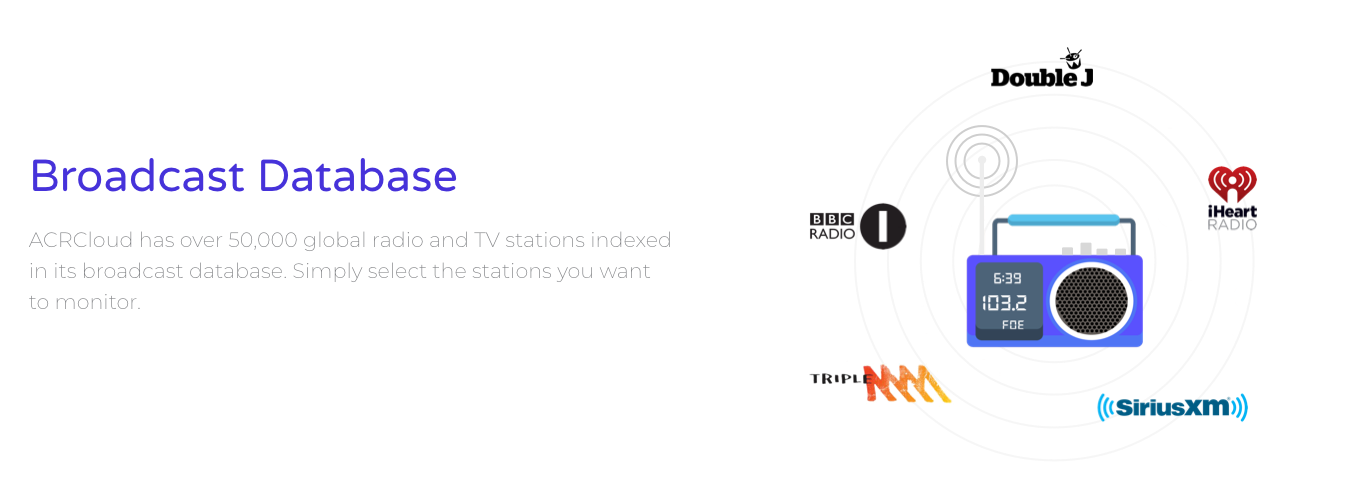
Much like The Echo Nest, music recognition specialist ACRCloud is more for bigger music companies to do track analytics with. Wielding a database of more than 72 million tracks, they work with business-level clients like Claro Música, Deezer, AudioMack, Anghami, and Cartoon Network to track usage of their music in various ways (e.g., TVs, radio streams) and apply that within public-facing apps they make — or for business intelligence purposes. Typically not for the individual user, but the existence of their technology can help show what may be possible in the future.
- Data Sources: Radio, TV, Streaming Apps
- Key Features: Broadcast Monitoring, Music Recognition, Audience Measurement
- Market and Accessibility: Enterprise Tool for Entertainment Organizations
- Use: Companies looking to track radio airplay around the world.
- Pricing: Variable
If ACRCloud were an artist, they’d be George Harrison: The understated sonic foundation to some of the biggest music companies in the world.
WARM
Though many subscription-based music data analytics tools are primarily focused on streaming and social media, WARM is unique in that it tracks global radio data. So, if terrestrial radio is your focus, and you need an affordable option for tracking your global airplay, WARM is a promising solution.
- Data Sources: Radio
- Key Features: Global Radio Royalty Tracking and Charts
- Market and Accessibility: Affordable Radio Data Tool for Anyone
- Use: Any artist, manager, or label looking to ensure that their international radio royalties are being distributed properly.
- Pricing: €39/yr, €4/6mo, €5/3mo, or €6/1mo
If WARM were an artist, they’d be Ariana Grande: a dominating presence for radio.
Indify
Indify is a unique analytics tool on this list, as music data analytics isn’t necessarily the company’s core competency. Instead, artist investment is. According to the company itself, “Indify connects top emerging artists with premier early-stage funding partners.” To enable their data-driven investment marketplace for indie artists and investors, the New York-based seed-stage startup leverages data as a way to facilitate partnerships for its members.
- Data Sources: Various Streaming and Social Media Platforms
- Key Features: Data-Driven Investment Marketplace for Indie Artists and Investors
- Market and Accessibility: Invite-Only for Artists Netting 8K+ Daily Streams and Investors Screened and Vetted by Indify
- Use: Superfans with capital to invest and promising artists looking to avoid the traditional label route.
- Pricing: Variable
If Indify were an artist, they’d be BENEE: a strong emerging artist pivoting to make new industry connections.
The Echo Nest
While The Echo Nest is a music analytics tool, its data source is primarily music itself, as opposed to how music performs on streaming, social media, and music-related platforms. What the MIT Media Lab spinoff excels at is a field in Music Technology called Music Information Retrieval (MIR), which includes audio fingerprinting (think Shazam), source separation and identification (using artificial intelligence to identify the vocal and then separating it out from the rest of the track, for example), and recommender systems (think Spotify’s Discover Weekly). The Echo Nest uses machine learning to identify acoustic characteristics, mood, genre, and other qualities of a track in order to better inform recommendations. It’s no wonder, then, that Spotify acquired the company in 2014 for somewhere between $50 million and $100 million.
- Data Sources: Music, Spotify
- Key Features: Acoustic Characteristics, Valence, Genre Taxonomy
- Market and Accessibility: Enterprise Tool Exclusive to Spotify and Its Clients
- Use: Predicting the music a listener will enjoy most.
- Pricing: Variable
If The Echo Nest were an artist, they’d be Childish Gambino: ahead of their time but a significant part of the music industry machine.
The Future of Music Data Analytics
From top-tier enterprise platforms to widely accessible subscription-based dashboards, music data analytics tools come in all shapes and sizes, making it all the more important to understand what your music data needs are and how to best leverage your music data to accomplish your goals in the music industry and beyond.
Because the field of music analytics is still very young, this is by no means an exhaustive list, and could already be expanded to include Republic Records’ Whale Report or a number of other analytics-related startups from Musiio to ROSTR. And there are newer tools popping up all the time.
Recently, music distributor and Sony Music Entertainment subsidiary The Orchard announced the launch of its OrchardGo mobile app, which allows entertainment companies who use The Orchard as a distributor to track streams, playlists, and social media trends from their phones. In the coming years, more and more music companies will likely follow suit as the power of music data and analytics tools becomes increasingly apparent.
So, consider this introduction to the tools of the trade an exploratory springboard for you as you grow your career in music and watch the field of music analytics continue to evolve.
Subscribe to have future insights delivered to your inbox when we publish, discover more insights@chartmetric.com, or share your insights on our socials.









